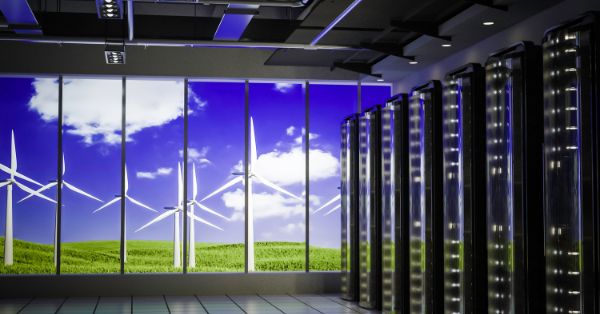AI data center boom outpaces oil as capex shifts to compute
A new International Energy Agency (IEA) analysis signals a structural shift as global data center capex eclipses oil exploration, intensifying scrutiny on how this capacity will be powered.
Capex surge, grid constraints, and power demand for AI
IEA estimates $580 billion will be spent on data centers this year—about $40 billion more than the search for new oil—underscoring AI’s centrality to digital and industrial strategies. This surge will sharply raise electricity demand and complicate interconnection queues already strained in many markets. The IEA expects roughly half of incremental demand to concentrate in the U.S., with most of the remainder split across China and Europe, amplifying stresses in metros where hyperscale and colocation footprints cluster near million-plus populations for latency and talent reasons. For network strategists, the power profile of AI training campuses and inference-heavy edge nodes becomes a gating factor for deployment timelines, site selection, and total cost of ownership.
Who is financing the AI data center expansion
Ambition is swelling as AI leaders line up multi-hundred-billion-dollar to trillion-dollar plans for capacity and compute. OpenAI has discussed capital needs on the order of $1.4 trillion over a decade, Meta has flagged hundreds of billions, and Anthropic has laid out multi‑tens of billions in expansion. Whether all of this is realized will depend on cost of capital, access to incentives, and the pace of power procurement. Expect a growing role for government levers—from tax credits to permitting reform—as public and private interests converge on energy security, competitiveness, and climate goals.
How much AI data center power will come from renewables
Renewables are emerging as the default option for new AI campuses, but the share that is truly carbon-free around the clock will hinge on siting, storage, and market design.
Why solar plus storage dominates near-term procurement
Developers report that permitting and local acceptance often favor on-site or adjacent solar paired with batteries, especially versus new fossil generation. Falling module and storage costs, coupled with federal and state incentives in the U.S., make solar-plus-storage the quickest path to large blocks of power under predictable long-term contracts. For many sites, utility green tariffs and virtual PPAs can complement behind-the-meter arrays to raise the renewable share while projects wait in interconnection queues.
The 24/7 carbon-free energy challenge and hourly matching
Annual REC matching is no longer sufficient for leading buyers; the bar is shifting toward hourly, 24/7 carbon-free energy matching initiatives. Yet diurnal and seasonal variability limits how much of a site’s load can be met by solar and batteries alone, especially in non-sunny regions or during prolonged weather events. Expect mixed portfolios: on-site renewables and batteries, off-site PPAs (solar and wind), emerging long-duration storage, and grid purchases backed by hourly certificates where available. The practical answer for the next five years: a rising but uneven renewable fraction, with carbon intensity improving fastest at campuses sited in high-resource regions with flexible load and storage.
New power architectures to firm renewable supply
A wave of novel approaches aims to firm renewable supply, de-risk interconnection delays, and compress levelized cost of electricity for AI-scale loads.
Second-life battery microgrids for AI (Redwood Energy)
Redwood Materials has launched Redwood Energy to repurpose EV batteries that are not yet ready for recycling into microgrids targeting AI facilities. These systems can shave peaks, provide backup, and support demand response, potentially easing stress in markets prone to summer brownouts and fast-growing AI clusters. If performance and warranty models scale, second-life storage could become a cost-advantaged bridge while new transmission and generation catch up.
Concentrated solar thermal for data centers (Exowatt)
Exowatt, backed by investors including Andreessen Horowitz and Sam Altman, is commercializing modular concentrated solar thermal units designed to deliver low-cost, dispatchable power. Each containerized unit concentrates sunlight to heat a thermal brick, stores energy for up to five days, and converts heat to electricity via a Stirling engine. The company targets one cent per kWh at high production volumes and reports a multi-gigawatt-hour backlog. Thermal’s appeal is round-the-clock output without lithium supply constraints, though land intensity and solar resource requirements mean early traction will skew to the sunniest regions where many AI sites are already heading.
Site selection: land, solar resource, and latency trade-offs
Two realities are driving site strategy: high-quality solar and abundant land support on-site generation, while metropolitan proximity shortens latency and accelerates talent and fiber access. Many operators will split the difference—placing power-hungry training campuses in high-resource regions with co-located renewables and siting inference clusters closer to users, backed by green tariffs and off-site PPAs. Thermal reuse, district heating partnerships, and liquid cooling will further optimize the energy footprint and community impact.
Risks, interconnection bottlenecks, and policy levers
Even with aggressive renewable adoption, execution risk around interconnection, financing, and social license looms large.
Interconnection delays and permitting constraints
Urban-proximate nodes face long grid queues, transformer shortages, and right-of-way constraints. Faster paths include hybrid on-site generation, storage-first interims, and flexible ramp commitments that align with utility capacity additions. Standardizing designs through programs like the Open Compute Project and adhering to ISO 50001 energy management practices can accelerate approvals.
Financing, incentives, and public support
As capital needs swell, developers are seeking expanded incentives and credit support. In the U.S., the Investment Tax Credit and production incentives for renewables and storage remain pivotal, while discussions around CHIPS-adjacent support for AI infrastructure highlight national competitiveness dynamics. Transparent, long-dated offtake structures and 24/7 matching commitments can lower financing costs by improving certainty of carbon outcomes and grid services revenue.
Urban siting, community impact, and resilience
Concentration near cities heightens concerns over land use, noise, water, and grid reliability. Heat reuse, non-potable water strategies, and diesel abatement plans will be critical to community acceptance. Expect more municipalities to condition approvals on local clean generation, resilience contributions, and peak-shaving commitments.
What telecom and cloud leaders should do now for 24/7 CFE
Pragmatic procurement and design choices can raise the renewable share today while preserving optionality for emerging technologies.
Procurement strategy for higher renewable share
Blend on-site solar and batteries with virtual PPAs, hedge with utility green tariffs, and adopt hourly carbon accounting where available to prioritize procurement that actually lowers grid emissions. Structure contracts that value flexibility (curtailment windows, demand response) and incorporate capacity from innovators like second-life storage providers as they mature.
Design and operations to cut PUE and shape load
Engineer for lower PUE with liquid cooling, plan for heat recovery, and enable load shaping (scheduling training, shifting non-latency-sensitive jobs) to align with renewable availability. Reserve space and interconnects for future long-duration storage or thermal modules, and evaluate microgrid designs that can island critical loads during grid stress.
Metrics and disclosure for 24/7 carbon-free energy
Move beyond annual REC matching toward 24/7 carbon-free energy KPIs, join coalitions such as RE100 and the iMasons Climate Accord, and standardize reporting of PUE, WUE, and hourly emissions. Clear disclosures will ease community negotiations and reduce the cost of capital.
The bottom line: a growing share of the AI data center boom will be powered by renewables—led by solar, storage, and emerging microgrids—but “how much” will be determined site by site by resource quality, interconnection speed, and the ability to firm supply to 24/7 standards.








































